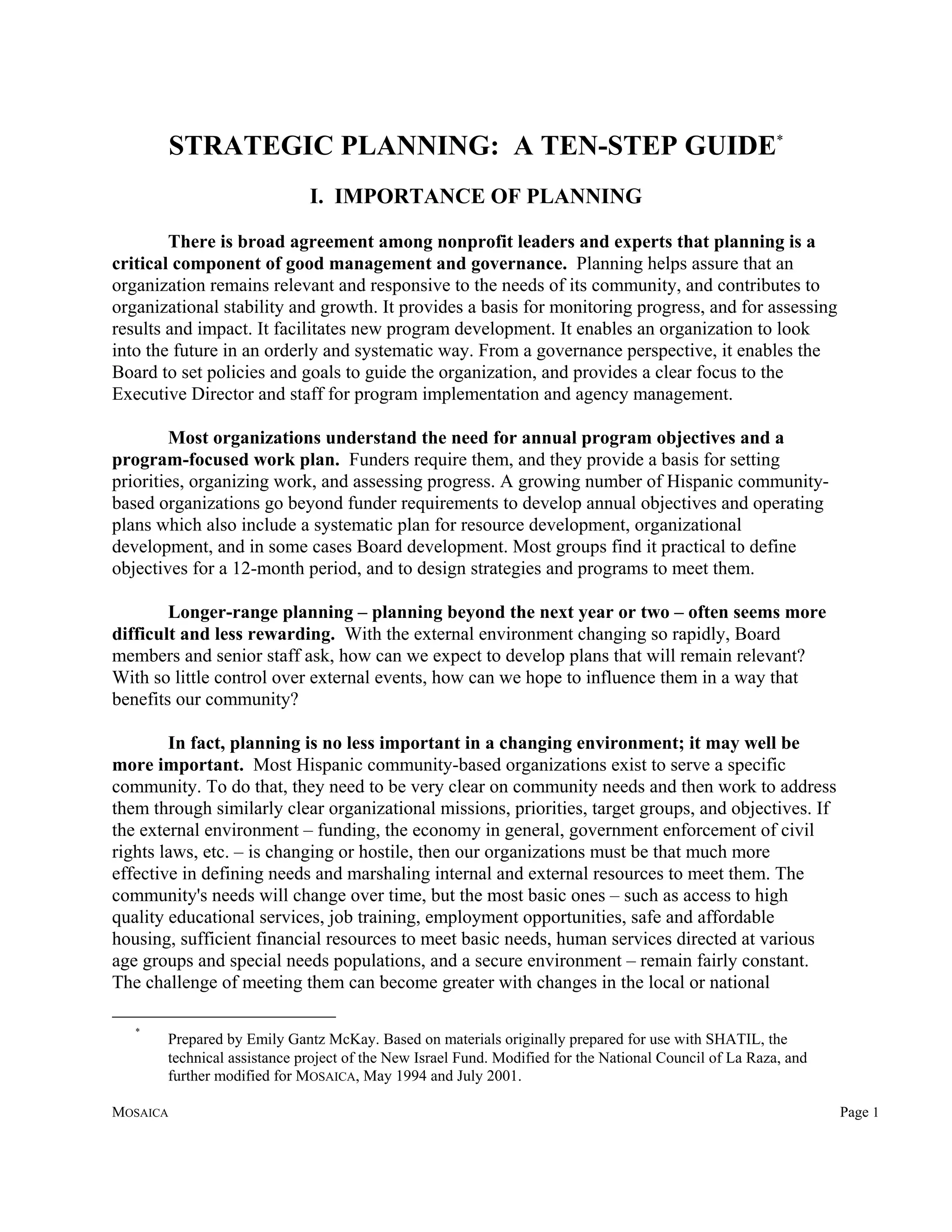Embed presentation
Downloaded 826 times















This document provides a 10-step guide for strategic planning for non-profit organizations. It begins by outlining the importance of planning and discusses the differences between long-range and strategic planning. Strategic planning focuses more on strategies for achieving a vision, while long-range planning emphasizes determining the vision. The guide then details a 10-step strategic planning process that includes conducting an environmental scan, identifying key issues, developing a mission and vision, setting goals and strategies, implementing and monitoring the plan. Strategic planning helps organizations define their vision and determine how to achieve it in a changing environment.













